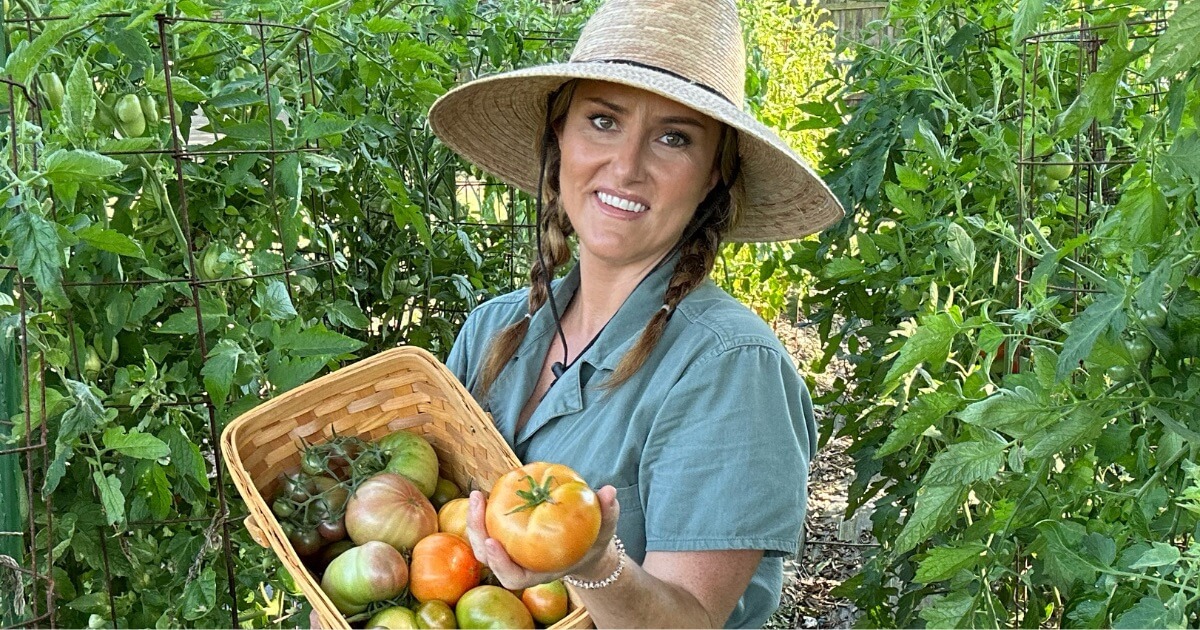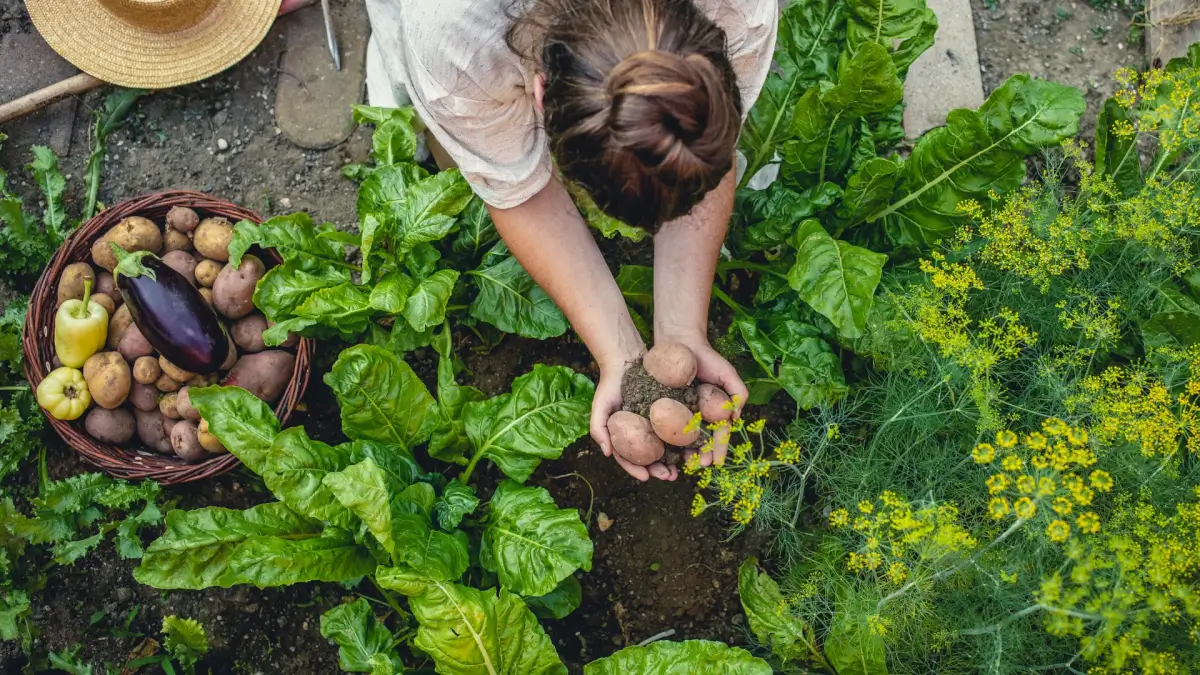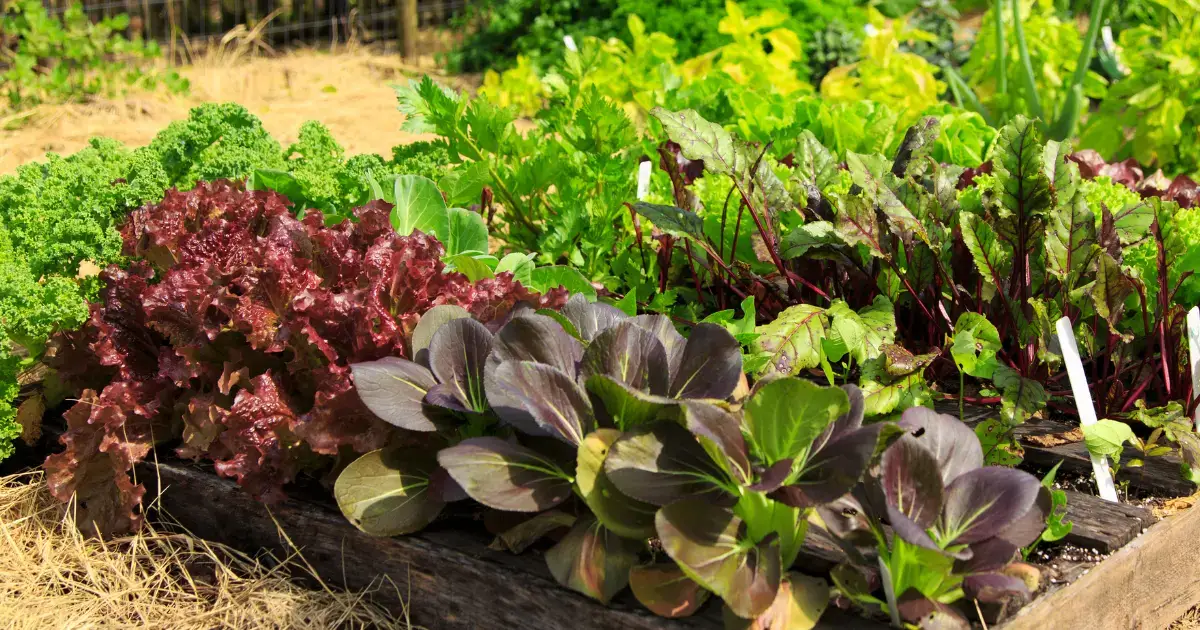
Growing potatoes at home is easy and fun. In this guide, I’ll teach you the simple techniques for planting potatoes in your North Texas garden.
When to plant potatoes in North Texas
Mid-February through early March is the best time for planting potatoes in North Texas. This gives potato plants enough time to get established before the intense heat arrives.
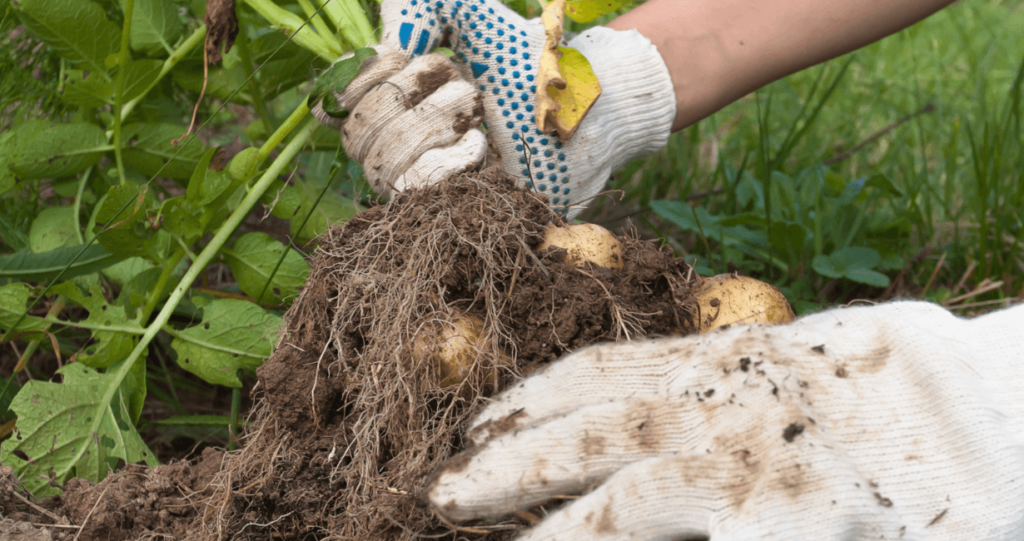
Where to find “seed” potatoes
Seed potatoes are typically available at local independent nurseries at planting time, but call ahead before visiting to verify that they have them in stock.
North Haven Gardens stocks a large selection of potatoes that perform well in our area.
Avoid buying seed potatoes from home improvement stores. These potatoes typically haven’t been stored properly, and are not likely to be varieties that will do well in North Texas.
Seed potatoes are available from online suppliers, but be careful – many of these suppliers don’t start shipping seed potatoes until March. This is too late for our area.
A follower recently suggested that Hoss Tools ships seed potatoes at the proper planting time.
Recommended potato varieties for North Texas
Varieties that perform well in our area include:
‘Red laSoda’
‘Kennebec’
‘Red Pontiac’
‘Irish Cobbler’
‘Yukon Gold’
Can you plant grocery potatoes?
Many North Texas gardeners successfully plant organic potatoes from the grocery. Make sure to only purchase organic potatoes.
Treat this as an experiment, however, because these potatoes were not grown to be replanted. Also, these potatoes are not certified disease-free.
For the best chances of success, use seed potatoes from a nursery or online supplier.
Preparing potatoes for planting
Small tubers can be planted whole, but larger tubers should be cut into pieces before planting. Each piece should have one or two “eyes”.
After cutting up, dust the pieces with powdered sulfur and the let the pieces dry for 4-5 days to let them callous over. This helps to prevent fungal rot.
How to plant potatoes
Potatoes can be grown in the ground, in raised beds, or in containers. Because the majority of the soil in North Texas is heavy clay, it’s easiest to grow potatoes in raised beds or containers because potatoes need very well-drained soil.
It’s also very important that potatoes get plenty of sun. Plant in an area that gets 6-8 hours of direct sun per day.
In-ground or raised bed planting
- If you are planting in the ground, amend the area with high quality compost before planting. If you have heavy clay soil, incorporate some expanded shale as well. Mix these products in to a depth of 6-8 inches.
- Before planting, mix a balanced, organic
fertilizer into the top few inches of soil. I like Micro Life Multi Purpose. - Space potatoes 12 inches apart, and plant them 3-4 inches deep.
- As the plant grows, mound up the soil around the base of the plant. Potatoes form along the stem of the plant. Continue mounding the soil until the mounds are 12 inches high.
- Add mulch around your potato plants once you finish the mounding process.
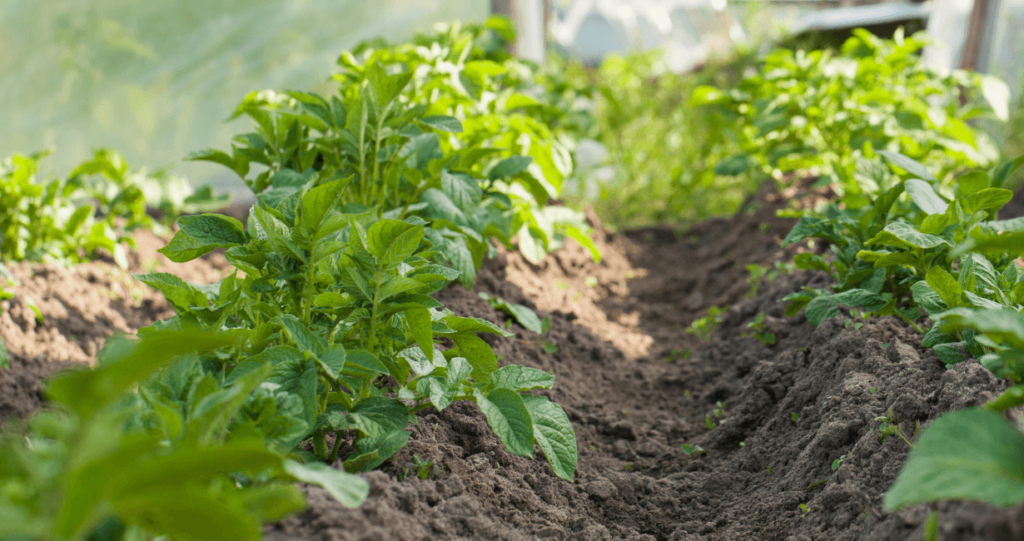
Container planting
Potatoes can be grown in regular garden containers or in “grow bags”. For the best results, use a container or bag that is at least 10 gallons. You can plant one seed potato for every 3 gallons of container size.
- Fill container with a good quality potting soil to a depth of 6 inches. (I like the potting soil available at Nicholson-Hardie.)
- Mix a balanced, organic
fertilizer into the soil according to directions. I use Micro Life Multi Purpose. - Place the seed potatoes on top of the soil and then cover them with 2-3 inches of soil.
- Once the sprouts reach 6 inches tall, begin adding more potting soil to the container. The potatoes form along the stem. Continue adding soil as the plant grows until the soil is 2-3 inches below the top edge of the container.
- Cover soil with mulch to conserve moisture.
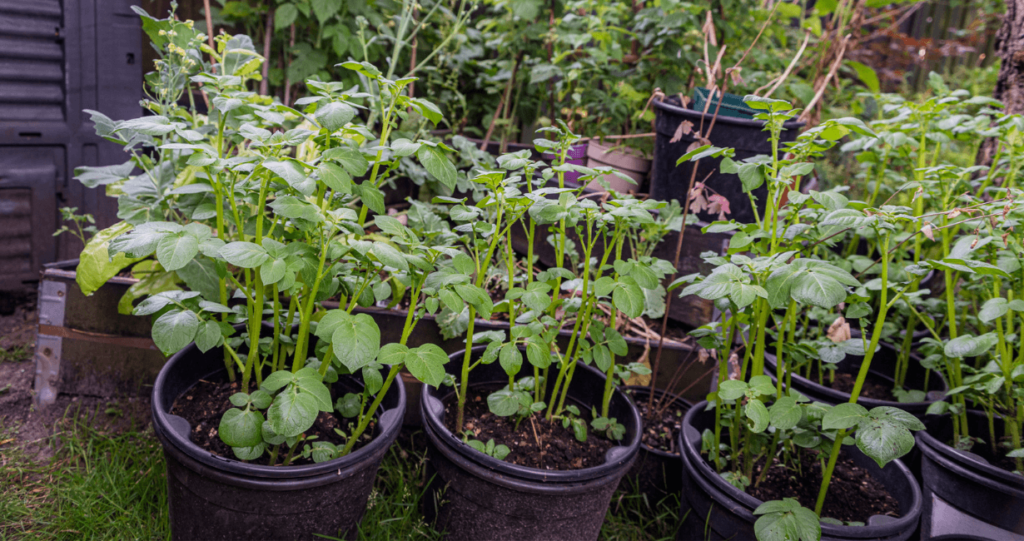
How to care for your potato plant
Water your potato plants enough that the soil stays consistently moist but not soggy.
Potato beetles and flea beetles pose the greatest threat to your potato plants. To prevent these pests from decimating your plants, do the following:
1. Never plant potatoes in the same place year over year.
2. Dust plants with food-grade
How to tell when potatoes are ready to harvest
Once the potato plants begin to flower, you can start harvesting the young potatoes, known as “new potatoes”. Simply dig down into the soil and pull them out.
Potatoes are mature and ready to harvest once the tops start to turn yellow and die back. Though each variety will have a different number of days to maturity, start to watch your plants for signs of dying back once they have been in the ground for around 100 days.
Dig gently into the soil, and pull the potatoes out.
If you are growing in containers, gently dump the pot out or turn it on its side and pull out the potatoes.
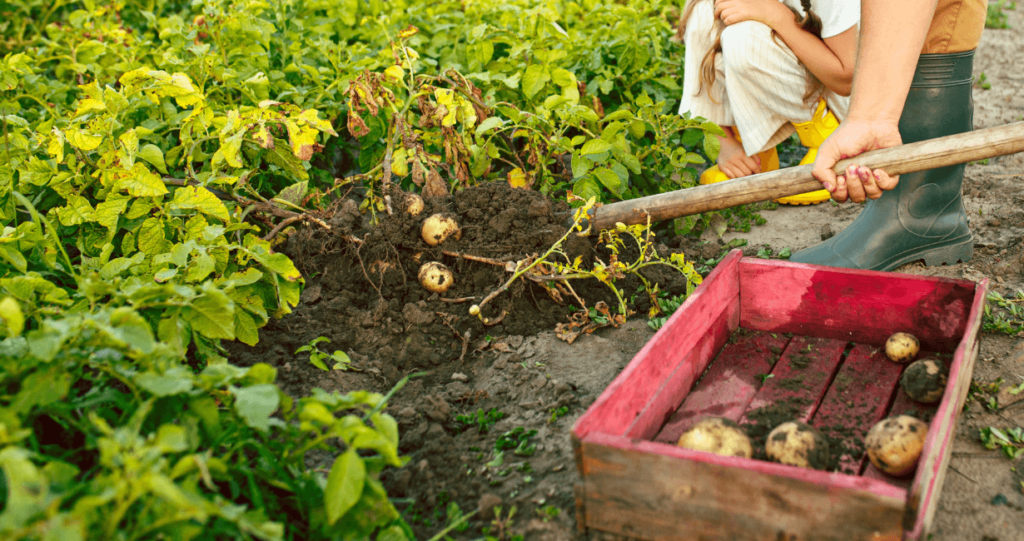
Storing your homegrown potatoes
Since most homes in North Texas don’t have root cellars, we must take care to store our potatoes in a cool, dry, dark place. If potatoes start to turn green (due to exposure to sunlight), they are inedible and must be tossed into the compost pile.
Resources and supplies:
Micro Life Multi Purpose
- Can Eating Tomatoes Help Prevent Weight Gain? New Study Says Yes - May 25, 2025
- New to Gardening? Join Our Step-by-Step Beginner Gardening Class - April 24, 2025
- Why “Intensive” Gardening is Not Good - March 9, 2025

